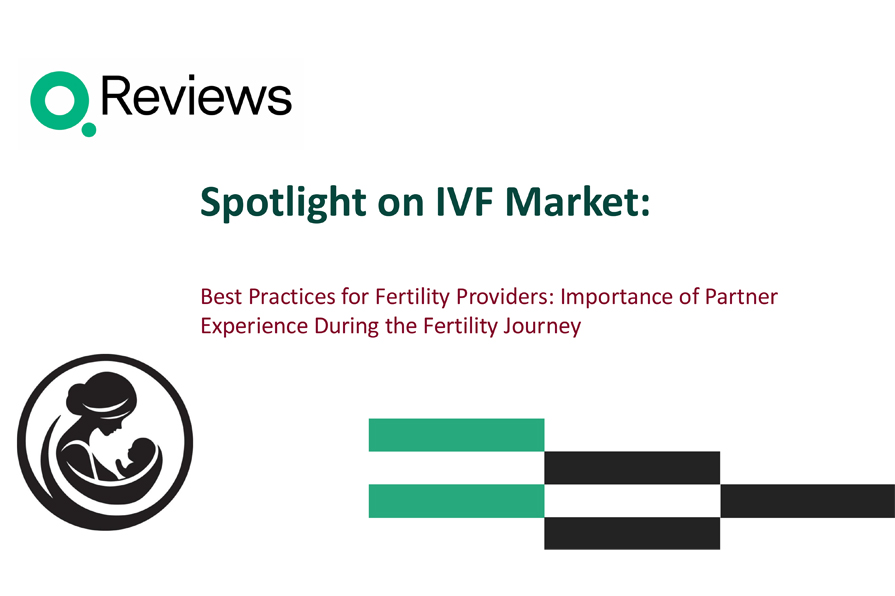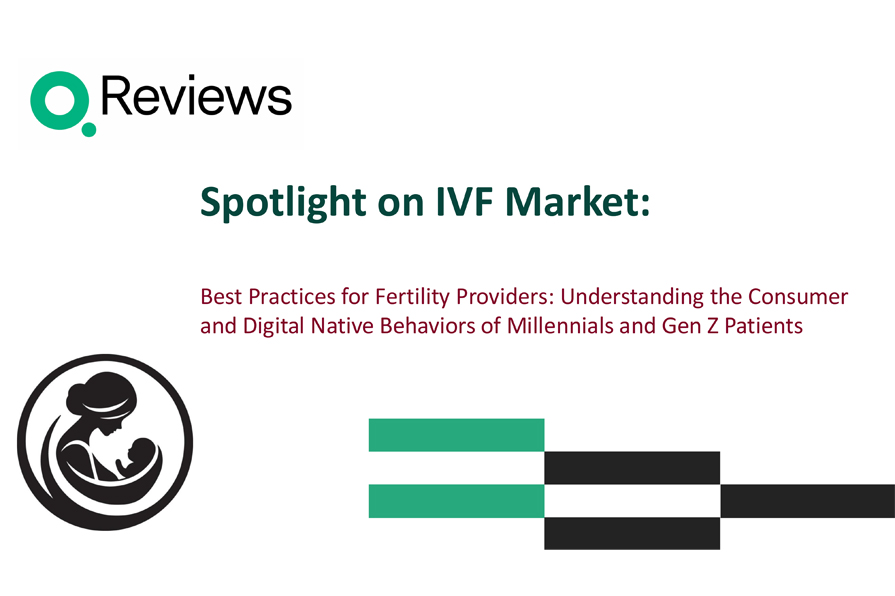
5 Ways to Improve Member Experience for Next Year’s Medicare Star Ratings

The CMS 2024 Medicare Star Ratings, released just days before the October 15th Open Enrollment kickoff, largely painted a picture of Medicare Advantage plans struggling to deliver on member experience as the industry grows:
- Average overall star rating dropped to 4.04 in 2024 from 4.14 in 2023
- 42% of Medicare Advantage plans offering prescription drug coverage had a score of 4 or higher, compared to 51% in 2023 and 68% in 2022
- Just 31 Medicare Advantage and Part D drug plans contracts earned 5 stars, vs. 57 in 2023
Yet despite the overall decline in scores, the Medicare Advantage Star Ratings still carry a significant amount of weight. In fact, the number of MA-PD beneficiaries enrolled in a plan that scored 4 or above actually increased year over year to 74% vs. 72% in 2023, demonstrating the power that Medicare Star Ratings have to attract and retain members. And of course, along with a higher score comes a higher Medicare bonus.
With scores now at their lowest since 2017, it’s clear that the way most Medicare Advantage plans are engaging with members isn’t working. As open enrollment season progresses, and the focus increasingly shifts from prospects back to members, now is the time to improve member experience.
We spoke with 40 leading healthcare executives at this year’s ACO/Payer Innovation Fusion conference to get their thoughts on member experience and where the biggest opportunities for growth in the next year are — here’s what they had to say.
1. Drive Members Toward Preventive Care
One of the notable areas of decline in the 2024 Medicare Star Ratings was in preventive care measures. Colorectal cancer screenings, annual flu shots, eye exams for diabetics, and statin therapy for patients with heart disease all saw year-to-year drops.
| Measure | 2021 Average Star | 2022 Average Star | 2023 Average Star | 2024 Average Star |
| Colorectal Cancer Screening | 3.9 | 3.9 | 3.8 | 3.7 |
| Annual Flu Vaccine | 3.2 | 3.4 | 3.2 | 3.1 |
| Diabetes Care – Eye Exam | 3.8 | 3.8 | 3.7 | 3.5 |
| Statin Therapy for Patients with Cardiovascular Disease | 3.1 | 3.5 | 3.5 | 3.3 |
While everyone should, of course, take steps to manage their health, payers can’t count on individual members to improve these metrics. Regardless of whether members are putting off care due to a busy schedule, anxiety, SDoH impediments, or any other reason, payers have a major opportunity to encourage preventive care.
Sending a push notification on your app once a year reminding patients to schedule a breast or prostate exam isn’t enough to improve member experience, though. Reminders can be helpful to a degree, but often, payers must persuade members to take action — and the best way to do so is through content.
The most effective type of content will vary from person to person. A certain segment might be convinced by infographics with hard statistics on the health outcomes of those who get a flu shot vs. those who don’t. Others may be swayed by a video testimonial from a patient talking about how a breast cancer screening helped their doctor identify and remove a precancerous tumor. Still, others may prefer a Q&A with a doctor on what a colonoscopy involves.
Building out different member segments and identifying their unique challenges and motivations will allow you to create the most persuasive content possible. And don’t be afraid to get granular — setting up a drip campaign for certain subsets of populations may be worth the effort. Black women at risk of breast cancer, for example, may have different needs and motivators than the general population.
Read More: Boosting Medicare Advantage Acquisition, Engagement, & Retention With Digital Health Solutions
2. Partner With (& Promote) Services That Address Chronic Care Gaps
With preventive care metrics in the Medicare Star Ratings dropping, perhaps it’s no surprise that measures of chronic care management dropped as well, including blood pressure and blood sugar management for diabetes, which dropped by a full .5 stars.
| Measure | 2021 Average Star | 2022 Average Star | 2023 Average Star | 2024 Average Star |
| Controlling Blood Pressure | N/A | N/A | 3.5 | 3.4 |
| Diabetes Care – Blood Sugar Controlled | 4.2 | 4.3 | 4.1 | 3.6 |
We were encouraged to hear, however, that more and more payers were adding services for members with chronic health challenges as a way to improve the member experience. Some innovative partnerships we learned of included:
- Medical transport services offering discounted or even free rides to providers for transportation-insecure beneficiaries
- Food-as-medicine services delivering nutritionist-approved meal kits right to members’ homes
- On-demand mental health services through community resources and partners
Services like these tackle challenges that have traditionally been overlooked in chronic care management and offer enormous value to patients. But as the VP of Medicare Operations of the Midwestern branch of a major Medicare Advantage plan told us, the members of plans that offer these services are often not aware of them.
This speaks to the importance of not just offering resources, but also connecting patients to them.
To effectively connect members with these resources, however, you have to meet them where they are — and that may require leveraging different communication channels. Many plans, for example, are finding that members do not engage with their apps — the Chief Marketing Officer of a Blue Cross plan even told us that they would be deleting their app entirely. Emails, meanwhile, have an open rate of just about 6% to 20%.
On the other hand, SMS text messages have an open rate of between 45% and 98%. And with mobile phone usage now nearly universal, even among elderly and indigent populations, text messaging is one communication channel Medicare Advantage plans would do well to leverage more heavily.
3. Invest in Tech to Facilitate Care Transitions
Among the latest metrics to be included in the Medicare Advantage Star Ratings is transitions of care, which debuted at a meager 2.5 out of 5. As the single lowest Part C measure recorded this year, this is a perfect area to improve the member experience.
What makes care coordination so challenging right now is how fragmented it is. In addition to their PCP, most patients see multiple specialists for their different health challenges. In fact, a 2021 study published in the Annals of Internal Medicine based on 20 years of data found that one in three seniors saw at least five doctors per year. And odds are, not all of those providers will be using the same EHR.
With patient information distributed across multiple channels, it’s difficult for providers and payers to
a) get a comprehensive view of a patient’s health and
b) communicate with one another. In this case, a digital engagement tool can be a tremendous asset.
For one, having a single central platform gives patients, providers, and payers alike a common source of truth. What’s more, a digital engagement platform helps break down the silos that currently exist among these different groups. These two factors combined, as the VP of a plan in California and the CMO of an ACO in New England both told us, add great value for all parties involved.
Let’s say a member of yours goes to an out-of-network OB-GYN for an annual checkup. During the exam, the OB-GYN notices that the patient is exhibiting signs of depression and anxiety, and refers them to a mental health clinic affiliated with their practice. If you as a plan have no visibility into that, you have no way of helping that member.
With a digital engagement platform, though, you can understand a patient’s needs and connect them with resources they might find valuable, whether that’s a list of your own in-network mental health professionals or supplementary services like discounts on mindfulness apps. Ultimately, this can lead to better patient outcomes, lower costs, and higher customer satisfaction.
4. Amplify Home Care Coordination With Digital Outreach
While facilitating transitions of care is essential, payers must also prioritize long-term engagement. At present, many payers’ contact with members dwindles in the days and weeks after a significant care event like a hospitalization or procedure.
| Measure | 2021 Average Star | 2022 Average Star | 2023 Average Star | 2024 Average Star |
| Monitoring Physical Activity | 3.5 | 3.1 | 3.2 | 3 |
| Care for Older Adults – Medication Review | 4.3 | 4.4 | 4.4 | 3.8 |
| Care for Older Adults – Pain Assessment | 4.5 | 4.4 | 4.3 | 3.9 |
| Plan All-Cause Readmissions | N/A | N/A | N/A | 2.9 |
Indeed, the 2024 Medicare Star Ratings revealed drops in monitoring physical activity, with precipitous declines occurring in care for older adults. Medication review in older adults went down from 4.4 to 3.8 stars, while pain assessment went down from 4.3 to 3.9 stars.
Failing to engage high-risk patients, however, increases the likelihood of readmissions and other adverse health events. With average all-cause readmissions coming in at just 2.9 stars, it’s urgent for Medicare Advantage Plans to ramp up at-home care coordination now — but many are limited by small, overworked care coordination teams.
“The challenge when it comes to managing chronically ill patients is that booking an appointment with a PCP is available on demand, but what they don’t have is the ability to book an appointment with their care coordinator.”
– Senior Director for a Georgia-based plan
When you don’t have the budget to hire additional support, digital health solutions can help you amplify your efforts and improve member experience. And this doesn’t even have to require monitoring devices — pushing out automated reminders and requests via text can help care coordinators keep tabs on vulnerable populations, identify the most at-risk individuals, and intervene before health problems escalate.
You might choose, for example, to set up a workflow that sends daily or weekly automated texts to diabetic members prompting them to input their weight, blood sugar levels, and blood pressure. Responses that fall outside of an acceptable range can be flagged to care coordinators, who can ask members follow-up questions, connect them with relevant content and services, and prompt them to schedule visits with their providers.
By providing care coordinators with a direct line of communication to at-risk members and the resources they need to address those members’ challenges, you allow them to take a more proactive role in members’ well-being and concentrate their efforts where they’re most needed.
Read More: How Remote Patient Monitoring Can Improve Health Outcomes
5. Measure & Improve Member Experience in Real Time
| Measure | 2021 Average Star | 2022 Average Star | 2023 Average Star | 2024 Average Star |
| Complaints about the Plan | 4.8 | 4.7 | 4.3 | 3.9 |
| Plan Makes Timely Decisions about Appeals | 4.3 | 4.6 | 4.6 | 4.1 |
| Reviewing Appeals Decisions | 4.5 | 4.6 | 4.4 | 3.6 |
| Rating of Health Plan | 3.2 | 3.5 | 3.2 | 3.1 |
The 2024 Medicare Advantage Star Ratings saw a number of significant decreases in customer service-related metrics, including complaints (-.4 stars), timely appeals decisions (-.5 stars), and reviewing appeals decisions (-.8 stars) — all of which may very well have contributed toward the decline in health plan ratings.
The healthcare executives we spoke with largely attributed this to the fact that the only member satisfaction surveys they conduct are CAHPS surveys done just twice a year through legacy vendors with long turnaround times. And when payers finally receive the results of those surveys, it’s often too late to do anything about them.
“By the time we measure member satisfaction, we’ve already allowed problems to permeate. Who knows how many other members have been affected before we realize there’s an issue?”
– National Director, Centene Corporation
Collecting feedback only when regulations mandate it isn’t enough, though. Let’s say, for example, that patients are unhappy with how long it takes for them to get an appointment. Without a digital survey tool, you’ll only find that out once you’re penalized for it on CAHPS.
By sending out regular member feedback surveys on a digital tool, however, you can identify that problem in real time and take the appropriate steps to fix it — whether that means adding more PCPs to your network, partnering with local urgent care centers, or any other corrective step — before the next CAHPS survey.
You can also use surveys to get real-time patient feedback on the services you offer, allowing you to identify which services members want you to add and which ones you may be able to cut due to low utilization.
Set Course for Member Experience Success in 2024
Medicare Advantage plans play a critical role in helping curb Medicare costs, filling in coverage gaps, and improving beneficiary health outcomes. As such, it’s no surprise that they’ve been growing at a rapid clip. But in order to continue offering high-quality service at scale, these payers will need to adapt to their members’ wants and needs.
While there’s no overnight fix for the issues identified in the latest CMS report, MA payers still have nearly a full year before the next one comes out. By making a plan to improve member experience now, you can significantly boost your chances of improving your 2025 Medicare Star Ratings as well.








